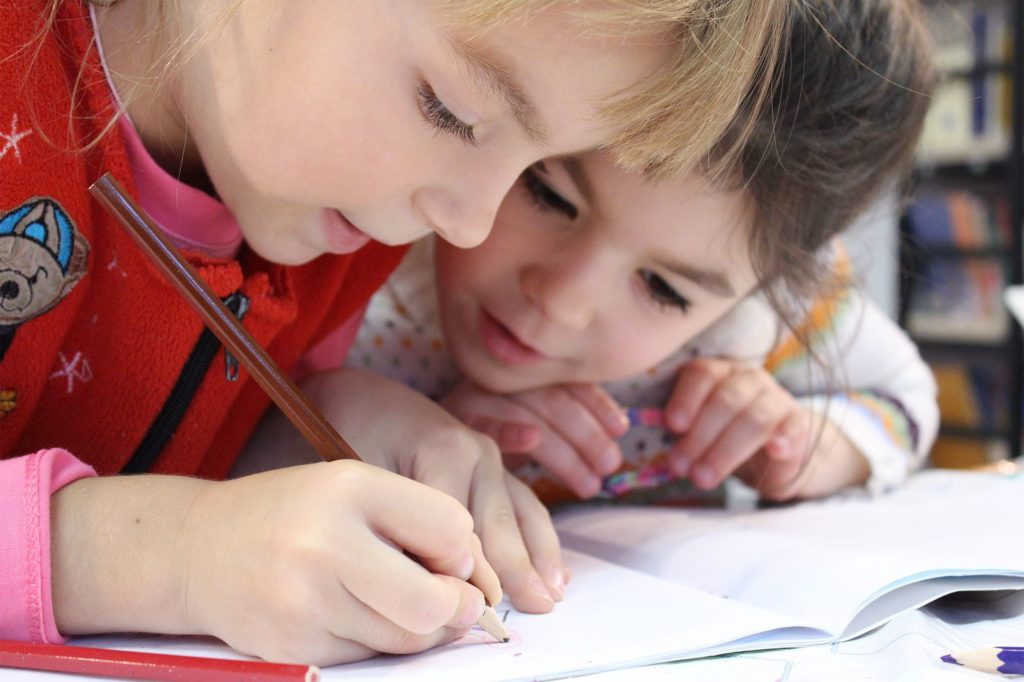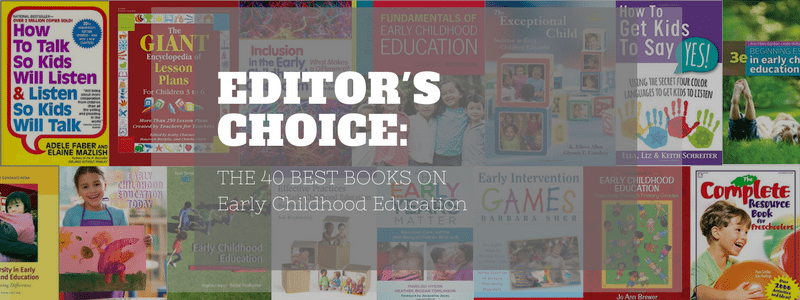
The early childhood years are so exciting. It is in these moments from birth to grade 5 that major developmental work takes place. Culture, the individual’s mind, the classroom layout, peers, situation, and circumstance affect every aspect of these early developmental years. As a 21st century early childhood educator you understand the value of keeping with contemporary models of education and the value of seeking out alternatives when the mold doesn’t fit your unique bunch of young learners. It is an exciting field that continues to develop and evolve and in some cases hearken back or sideways to discover lesser-known methods of working with young learns. Head over to Italy, Hungary, or decades ago, Russia and you will find some very inspiring insights into child development we as a culture may not have looked into. Perhaps you are also newly reinvigorated to include social justice in your education paradigm- recognizing that the early years shape what kind of people we are and will become. Our top 25 best books on early childhood education offers both comprehensive and more honed-in directives for educating to this very important group of minds. In our list we have something for parents, new teachers, seasoned veterans, and any one who is interested in delving deeper into the field of early childhood education.
1.)The Whole-Brain Child: 12 Revolutionary Strategies to Nurture Your Child’s Developing Mind by Daniel J. Siegel and Tina Payne Bryson
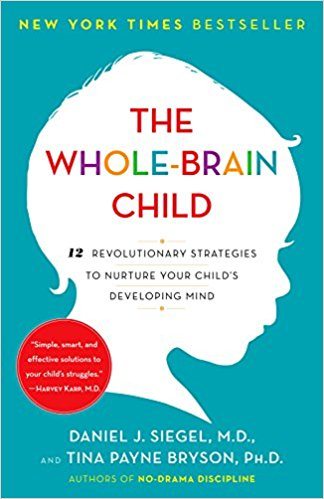
This is the landmark book on children and the brain. Pediatric psychiatrist and director of the Center for Connection Tina Payne Bryson teams up with neuropsychologist Daniel Siegel to help parents, educators, psychologists, and others broach the topic of whole-brain learning. The proposed program uses 12 strategies- just 12. Though the brain remains a great mystery to us, we are thrilled to see an attempt to present clear and concise workable tools that will help the reader actually then close the book and use them. The aim of the book is “linking different elements [of the brain] together to make a well-functioning whole.” The book includes charts, integration recommendations across early childhood strategies, and even a refrigerator guide for parents. If the aim of this book is to teach brain integration to everyone, then the method is through accessible guidelines. Payne Bryson and Siegel do a masterful job towing the line between jargon and over simplification- a real craft! This book would be a real gem of a gift for first-time parents, and veteran parents alike.
2.)How to Talk So Kids Will Listen & Listen So Kids Will Talk by Adele Faber and Elaine Mazlish
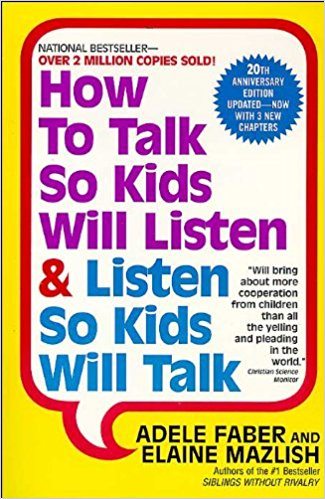
How to Talk So Kids Will Listen & Listen So Kids Will Talk has been referred to as the “parent and child bible” and is a great resource for any parent or educator. With a clear emphasis on communication, How to Talk really helps parents along with their children alleviate frustration. Clear communication begins with listening and as Faber writes “listening with full attention.” How to Talk clearly illustrates ways to turn our “natural language” or more practiced language around into language that empowers conversation. Some of the ideas in this book may flip your instincts and call into question some of your tried and true parenting responses. Chances are, that if you have picked up this book, you’re ready for a change. In addition to showing, each chapter steps you through the process so you don’t have to reach to book’s conclusion to practice new communication skills with your children. Though this book is geared more specifically to a parent-child relationship we don’t see a single reason why these principles can’t be put into practice in a classroom setting.
3.)The Exceptional Child: Inclusion in Early Childhood Education by K. Eileen Allen and Glynnis E.Cowdery
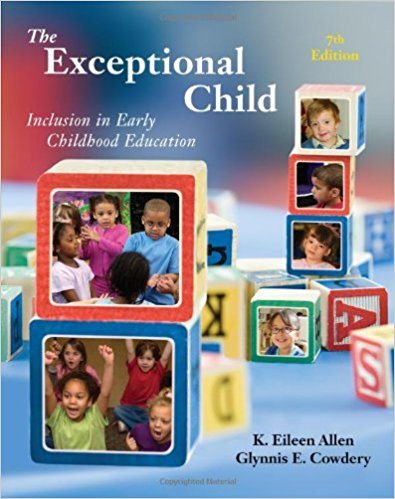
Now in its 7th edition, The Exceptional Child is for every child’s education, whether working in the department of special education or otherwise. This is a textbook and as such approaches its topic comprehensively: including the law and policy, planning your classroom to be inclusive, understanding various exceptionalities, as well as how to put everything into practice. In the latest edition expect to see some new case studies, up-to-date legislative activities, and new reflection areas. This work will make a great reference piece to keep near your desk throughout the school year. Keep it handing when your setting up your classroom, taking note of IEPs, advocating with parents, looking to facilitate improved social skills, or are ready to advance your career as an inclusion specialist.
4.)Effective Practices in Early Childhood Education: Building a Foundation (3rd Edition) by Dr. Sue Bredekamp
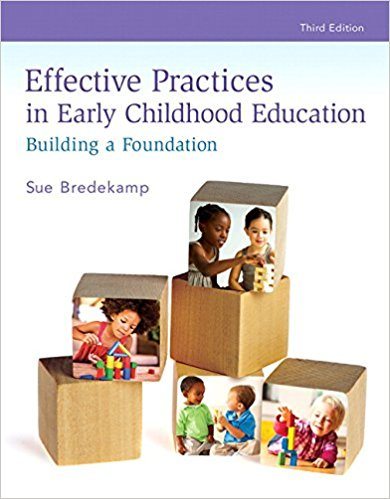
Leading expert on early childhood education Sue Breadcamp teams up with child psychologist Dr. Kate Cranley Gallagher in Effective Practices in Early Childhood. Now in its third edition, Breadcamp provides the readers with current information regarding policy change, Common Core, promoting play and more. In this edition content is also disseminated using a program called REVEL which is interactive, and aims to further engage today’s learners. Beradcamps’ expertise and lifelong love of learning and education bleeds through every chapter. Cranley Gallagher illuminates the pages with her strong background in child psychology. Expect to learn about how the early childhood years develop and change, create your own excellent approach to teaching, applying you learning to all types of minds, using language and diversity to strengthen your teaching, how to create coherent relationships with the parents of your students and of course how to implement this knowledge across the curriculum. We like to think of this book as an entire supplement to your degree in education and one that you will treasure throughout your career as a teacher.
5.)Anti-Bias Education in the Early Childhood Classroom: Hand in Hand, Step by Step edited by Katie Kissinger

This is an opportunity to do some serious searching deep within yourself. You know the searching we mean. We mean, checking in and asking “do I have biases and do I act on them?” That’s not an easy thing to detect in oneself, but when we’re honest with ourselves, we get there. If you’re ready to have that discussion, you’re ready for this book. We teach what we believe. If you’re looking for social justice to prevail in a major way, understand that you are an incredible influence who will shape the prospects of diverse children’s futures, then this is the book for you! This book touches on race, disability justice, justice regarding means, institutions, and what could be getting in the way of learning for people who experience any number of those very critical issues in education. Would you agree that part of education reform should include a hopeful and bright future for every single student whatever that looks like? Great! This book will give you tools to enact hope for you students. This important work is not magical, does not just take that “special someone” and Katie Kissinger understands that this is going to take modeling to demonstrate how to enact anti-bias education effectively. This is an essential addition to your education collection.
6.)The Giant Encyclopedia of Lesson Plans for Children 3 to 6 (GR-18345) edited by Kathy Charner, Maureen Murphy, & Charlie Clark
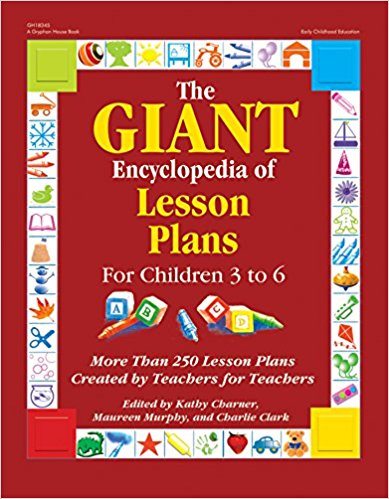
In the latest edition of The Giant Encyclopedia expect to find over 250 complete lesson plans relevant for small groups, classrooms, and even ideas for one-to-one. We love this book for all of the fresh ideas on some of the most fundamental categories- like animals, colors, food, insects, health and more. The contents of this book are exactly as one would hope: an exhaustive treasure trove of lesson plans that focus on the early years. Within its pages you will find visuals to aid in the process, accompanying book recommendations, methods for assessment within the lesson, and more. Lesson plans also include activities outside of the core curriculum allowing for movement both gross and fine motor, arts, tactile exploring and more. We love the wide variety of lessons and experienced found within the pages of this book. For any educator or parents with an early learner, this book is a great resource.
7.)The Complete Resource Book for Preschoolers: Over 2000 Activities and Ideas (Complete Resource Series) by Pam Schiller and Kay Hastings
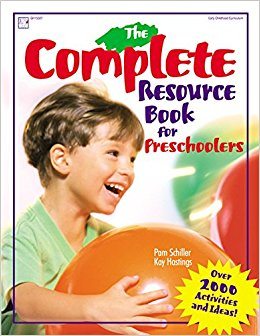
We love this resource for many reasons, but one of the biggest reasons is that this book is a time saver. Have you ever found yourself combing through website after website looking for the perfect activity to match your learners needs and looked up at the clock only to find yourself hashing out some of the old activities from years past? You’re not alone. All educators found themselves in this situation. The Complete Resource to the rescue! Though this is a large resource, it’s not as large as the world wide web. We don’t think you’ll run into the very real issue of choice fatigue with this resource. Nor will you come up short on ideas. This book tows the line perfectly. Within the pages you’ll find activities for seasons, fine motor, dramatic play, music, and more. Additionally the book divides activities into units, discusses various ways to set up activities and gives helpful tips for handwriting and other fundamentals to learning.
8.)Carson Dellosa Key Education Early Learning Language Library Learning Cards by Kasandra S. Flora and Sherrill B. Flora

Speech and Language Pathologists Kasandra S. Flora and Sherrill B. Flora have compiled a collection of stimuli for language development in the early childhood years. The purpose of these 160 language cards are to build and expand expressive and receptive language skills. All teachers can benefit from the materials and we particularly like the stimuli for exceptional learners-including, ESL, autism, and others. Individuals without expressive language will benefit from the clear pictures and category break downs. Each card is like a mini lesson and webs together functional language skills seamlessly. Additionally, these cards are great tools for parents who want to work on building vocabulary, create opportunities for open-ended questions and encourage fun learning in the home. Teachers, special educator, and parents can all benefit from the contents of this Language Library for early learners.
9.)Supervision in Early Childhood Education: A Developmental Perspective 3rd Edition by Joseph J. Caruso & M. Temple Fawcett
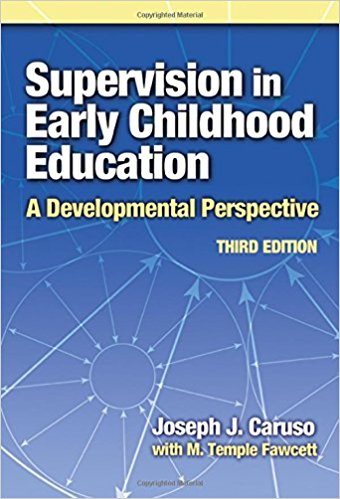
Supervision in Early Childhood Education is the text book for individuals looking to step into a leadership role in early childhood education. The first part of the book lays out the context for supervision. Each chapter progresses in a natural way starting with a clarified definition of early childhood education supervision, followed by practical implications, and an outline of various responsibilities. In the second part of this book you will learn about your own personal evolution as a supervisor. As no two supervisors are alike, throughout this section you will learn how to hone and nurture your skills. Additionally, learn a variety of methodologies of supervision required across different school settings. This final part of this book discusses staff recruitment and the career development of that staff.
10.)Developmentally Appropriate Practice in Early Childhood Programs Serving Children from Birth Through Age 8 3rd Editionedited by Carol Copple and Sue Bredekamp

Developmentally Appropriate Practice in Early Childhood Programs is a common textbook used for education bachelor’s degrees and early childhood education master’s degree programs. This book is approved by the National Association for the Education of Young Children (NAEYC). This resource guide focuses on evidence-based research to help you create developmentally appropriate material for your young learners. The age range is birth to 8 which is broken down year by year including insights on what to expect from each. This is a stable for students of higher education and into their careers as early educators.
11.)Early Childhood Education Today (13th Edition) by George S. Morrison

In the 13th edition of Early Childhood Education Today you will learn how to integrate contemporary critical components into your 21st century ECE classroom. As an early childhood educator, you are going to be confronted with a number of new challenges. This edition addresses literacy in the classroom, the achievement gap, diversity, teaching to exceptional learners, mental health, developmentally appropriate lesson planning, and how to use technology as a support for education. This book includes convenient access to ancillary digital material accessible on CD, tablet, and computer. This book is often used as a text book and is relevant for both beginning educators and seasoned educators alike.
12.)Introduction to Early Childhood Education: Preschool Through Primary Grades (6th Edition) by Jo Ann Brewer
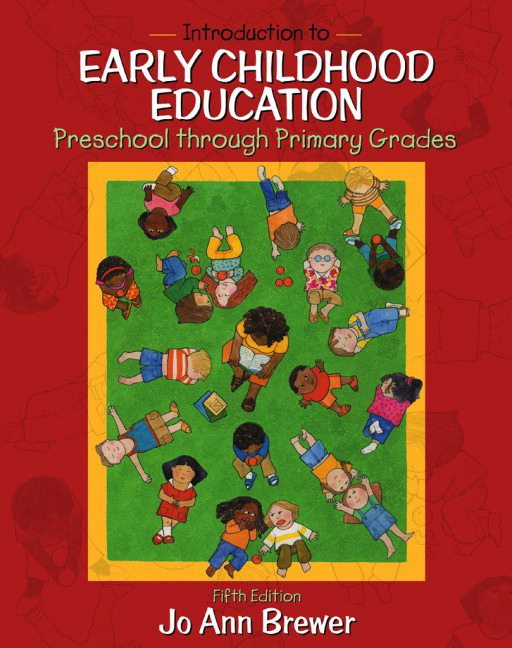
This down-to-earth textbook by Jo Ann Brewer is a clear and comprehensive glance into the evolving realm of early childhood education. This is a must-have resource particularly with attention to the substantial material centered on language and literacy development. Expect to learn about a range of different teaching styles, classroom set up, and methodologies for reaching diverse learners. Brewer focuses on developmentally appropriate programming which leaving no child out. This resource is great for special educators as well. Commonly used as a text book, expect to find yourself entering into your career as an educator with a stronghold on the foundations of early childhood education. This is a resource you will want to return to again and again.
13.)How To Get Kids To Say Yes!: Using the Secret Four Color Languages to Get Kids to Listen by

Ella, Liz, and Keith Schrieter team up as a family and talk to you like you are one of theirs. This book comes from a parent-perspective and is perfect for parents, grandparents, and children! We also encourage teachers to take a look- if you are finding some students over others more difficult to communicate with, this may be the resource that helps all of that click into place. The “Four Color Languages” are what Schrieter argues are the various world-views of children and many children fit into one ore more of these color languages. Understanding the world-view of your child or student frames how you will communicate with her/him. This book walks you through each of the four personality types, and how to interact with them-leading you to better communication and a communal approach to parenting and learning. Along with the practical advice, this book contains real life examples, addresses Dads, and ways to engage your child in this process. It’s a collaborative approach to communication that honors the child’s personality leading to better outcomes, and ultimately happy, kind, and charitable children.
14.)Who Am I in the Lives of Children? An Introduction to Early Childhood Education (10th Edition) by Stephanie Feeney and Eva Moravick
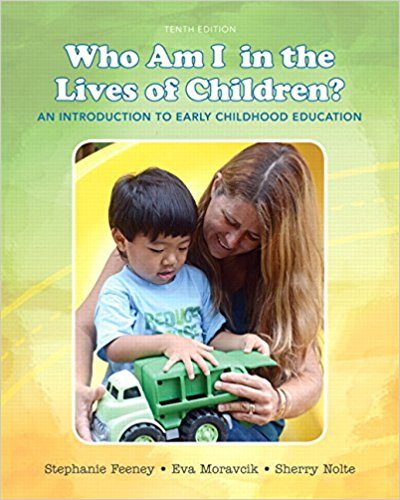
In Who Am I in the Lives of Children authors Stephanie Feeney and Eva Moravick challenge the reader to think about who they are and will become as educators to young children. A serious topic turned into a text book that is a must-have for any individual seeking to enter into the field of early childhood education. This is a highly visual and interactive book that demonstrates through modeling, and countless real life examples. You will learn how to create developmentally appropriate lesson plans that focus on social and emotional intelligence, as well as physical and intellectual intelligence for children ages birth to grade 3.
15.)The Early Years Matter: Education, Care, and the Well-Being of Children, Birth to 8 by Marilou Hyson and Heather Biggar Tomlinson
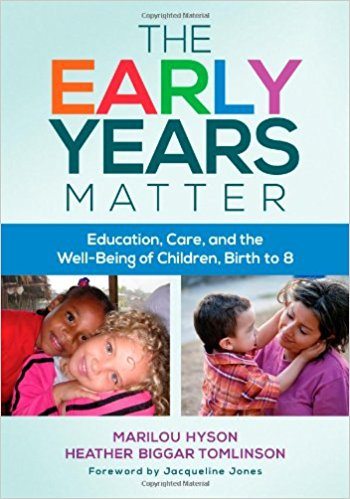
In The Early Years Matter Marilou Hyson and Heather Biggar Tomlinson include children of all abilities and backgrounds for their book. Hyson and Tomlinson start in the home with early care and learning for families. They move through the growth and development of babies and toddlers and examine ways to form relationships in the home and in the classroom without forgetting advocacy towards improved infant and toddler services. The book progresses through ages in school starting with preschool and expresses various options and ways to select the best program. The kindergarten through 3 year section continues to examine child development and how to create an educational experience that is truly positive for these young learners. We truly appreciate the attention Hyson and Tomlinson pay towards matters involved with low income families, children who experience trauma, children with disabilities, and children who have immigrated. When it comes to content, The Early Years Matter is thorough, and truly addresses contemporary issues found in today’s early childhood education classrooms.
16.)Beginning Essentials in Early Childhood Education 3rd Edition by Ann Gordon and Kathryn Williams Browne
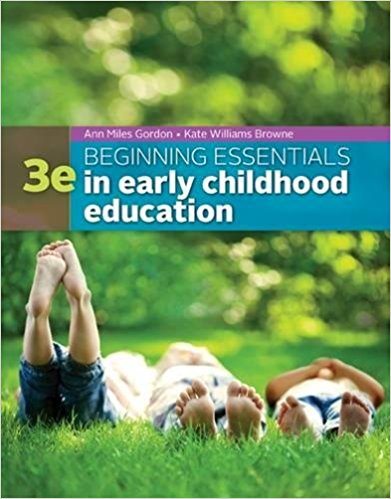
In the 3rd edition of Beginning Essentials in Early Childhood Education you will find new teacher vignettes, updates on “brain science”, and new ancillary teacher materials. This book aims to streamline the topic of early childhood education- making it a mini course that aims to cover quickly and clearly verses dive into minutia. In the first 50 pages you will learn about the history of early childhood education from inception to present as well as learn about the various types of programs. Section two looks at the “whole child” in terms of developmental stages, children with diverse abilities, special needs/ gifted and talented, and strategies for inclusion. This is just 20 pages in length, so is a sweeping overview. The next section discusses developmental learning and factors that influence development and growth. The remaining 100 pages focus on developing a career as a teacher. This brief overview of early childhood development is a great book for individuals who are either starting their education journey are a looking to assess whether or not this is the type of work they feel inclined to talk on. While limited in some respects by its brevity, it is still a highly informative text that wets the appetite for those who want to go deeper into the subject.
17.)Leading Anti-Bias Early Childhood Programs: A Guide for Change (Early Childhood Education) by Louise Derman-Sparks, Debbie LeeKeenan, & John Nimmo
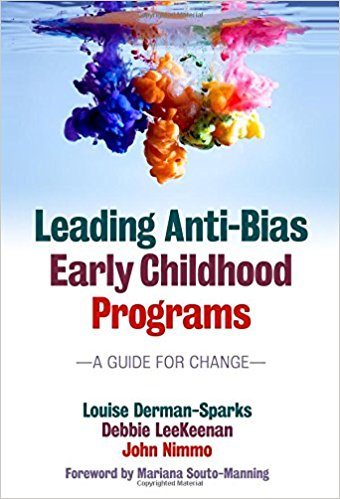
This book is a catalyst for change in the classroom. Louise Derman-Sparks, Debbie LeeKeenan, and John Nimmo challenge everyone- even the most resistant to change. This bold approach however, is necessary to really enact any form of change where biased educating is concerned. Be prepared to unpack your own thinking and potential biases and then quickly rebuild. The contents of this book lay a foundation and give practical skills so that you and those around you can benefit from your leadership in anti-bias education. This a must-have for all educators in today’s climate and certainly for those taking leadership roles in the field. Realistically, the authors state, anti-bias education takes initiative both from the teacher and the organization. Learn to create successful programming withing your given framework, and build a program from the foundation up. In fact Leading Anti-Bias Childhood Programs does not stop in the classroom and rather continues through to a call for activism in the field! If you are ready to challenge your mentality as a teacher, change the conversations in your classroom, and change the climate inside and outside of the schoolhouse, snatch up this book immediately.
18.)Early Childhood Education: Learning Together by Virginia Casper and Rachel Theilheimer
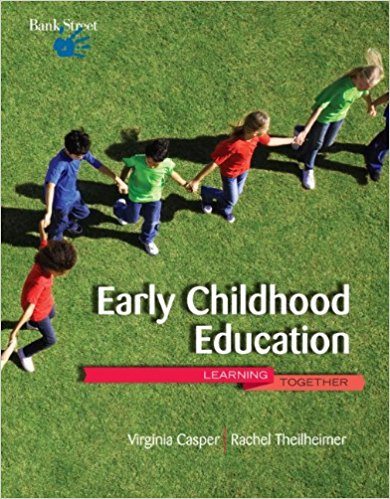
Developmental psychologist, educator and author Virginia Casper teams up with educator, and program director Rachel Theilheimer to bring you Early Childhood Education: Learning Together. This is a comprehensive overview of early childhood education and is a good textbook for beginning students. Priced low for a textbook, this piece is accessible to young students entering the field or even those considering applying to school. The content is easy to follow and will give you a quick and sweeping overview of a variety of new challenges that individuals face in early childhood education and encourages the reader to make their pedagogy adaptable to myriad of classroom scenarios.
19.)Tools of the Mind: The Vygotskian Approach to Early Childhood Education (2nd Edition) by elena Bodrova and Deorah J. Leong
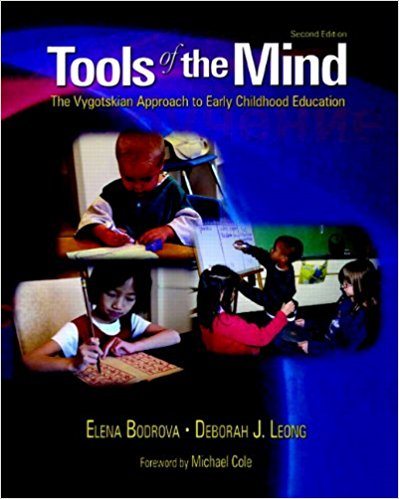
This is a unique opportunity to learn about the Vygotskian Approach in book form. This approach focuses a great deal on communal learning and how that affects executive function and how that helps students becomes agents of their own educations. Often times compared side-by-side with Piaget and how their philosophies on private speech differ, Vygotskian argues that private speech is an essential component that assists children to plan activities and strategies for their development throughout the early development of their life and even into adulthood. It is argued that the Tools of the Mind are in fact the “scaffolding” required to build self-guided learners. These tools aid in other functions as part of development including a child’s self control. This is a great resource for any individual looking to broaden their approach to teaching and delve into a different perspective on child development.
20.)Fundamentals of Early Childhood Education (8th Edition) by George S. Morrison

George S. Morrison, educator and professor along with contributing writers Elizabeth Beavers, Donna Kirkwood, and Mary Jean Woika bring to you this comprehensive yet light overview of early childhood fundamentals. It’s difficult to imagine a textbook that can achieve both of these things at once, but this one does. These eight critical themes are central to this piece: the value of developmentally appropriate practices (DAP), merging early childhood education and special education, closing achievement gaps between children of poverty and more advantaged peers, literacy development, integrating STEM, working with diverse learners, developing self-guided learners, and continual professional development. Thought out all of this you will also learn how to integrate education and DAP with parents. This is a fantastic resource for new students, first year teachers, and veteran teachers alike.
21.)Early Intervention Games: Fun, Joyful Ways to Develop Social and Motor Skills in Children with Autism Spectrum or Sensory Processing Disorders by Barbara Sher
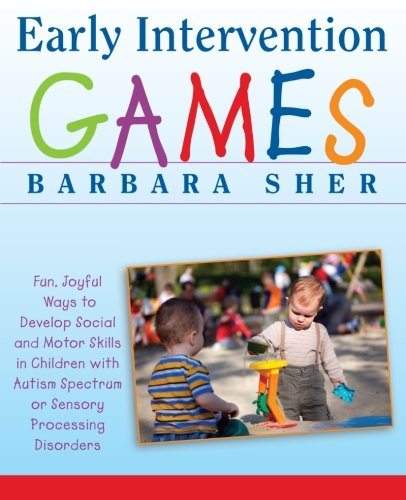
Early Intervention Games is written by Barbara Sher, an occupational therapist who has an understanding of the sensory needs of autistic individuals and individuals with a variety of sensory processing exceptionalities. Sher has organized a treasure trove of engaging games to helps young learning with motor planning both find and gross. Most all of the activities are geared towards groups large and small. Some activities may be modified to work for one child. Many of the activities require just a few easy-to-access materials. Displaying a clear understanding of the sensory processing differences of these exceptional minds, Sher also includes and entire section on water games are absolutely relevant to groups and once again may be easily modified to work for one child. We love this collection of games that help a variety of autistic and SPD learners. This is a great collection of games, and a perfect resource for special educators.
22.)Rethinking Early Childhood Educationedited by Ann Pelo

We were so thrilled to find this gem of a book. As many people argue, bias permeates education at the earliest of years may reinforce prejudice and even reinforce stereotyping with out-of-date stimuli and educational practices. Rethinking is a breath of fresh air. Editor Ann Pelo approaches her collection with activism at the heart. Pelo understands the importance of honing a sense of self and justice in the early childhood years and encourages teachers to connect with students on ideas related to social justice, ecological awareness, and active curiosity. Within the pages are accounts from a wide range of teachers and parents discussing social justice teaching in the field. If you as a parent or teacher are looking for inspiration on ways to educate your little one or classroom on the values of social justice for today’s world, snatch this book up immediately!
23.)Diversity in Early Care and Education: Honoring Differences by Janet Gonzalez-Mena
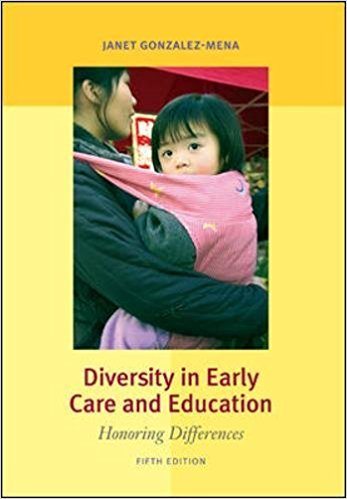
Highly regarded early childhood education expert and life long learner Janet Gonzalez-Mena brings us Diversity in early Care and Education. Gonzalez-Mena’s career went through the entire gambit: from interested volunteer to involved parents, to teacher aid, to leader in the field. Gonzalez-Mena has seen early childhood education from every angle and has honed her understanding of what young children need in their early years. In Honoring the Differences Gonzalez-Mena examines the importance of a broadened view of each child in their classroom. She encourages teachers to understand each individual’s culture when approaching classroom teaching. There is no guess work involved here- as the author explains various ways of listening to, unpacking and embracing diverse cultures in a manner that leads to effective education. This is a phenomenal resource for parents, care givers, and early childhood educators.
24.)Inclusion in the Early Childhood Classroom: What Makes a Difference? by Susan L. Recchia and Yoon-Joo Lee

You understand the importance of assessment to truly implement quality education for your students. What about assessing assets of the individuals? In Inclusion in the Early Childhood Classroom Susan L. Recchia and Yoon-Joo Lee discuss the joys of differences in the field of education. Rather than looking at disability as a “here’s what s/he can’t do” Recchia and Yoon-Joo embrace all of the “cans dos” evident in a diverse classroom. You will learn to facilitate social interaction in an inclusion classroom, embrace children with diverse abilities with positive responding, bridge the gap for those with “developmental differences”, and learn about the required “six teacher competencies” that make a fully inclusion classroom work. All of this is taught through research, through classroom example, and thorough examination. If you are working in an inclusion setting or are hoping to maximize the education for all types of learners in your classroom, this is an excellent resource.
25.)Twelve Best Practices for Early Childhood Education: Integrating Reggio and Other Inspired Approaches by Ann Lewin-Benham

Ann Lewin-Benham is a prolific writer and educator who bring to the world this exciting resource applicable to educators and parents alike.Lewin-Benham closely examines Reggio Emilia in its cultural context and how it uniquely benefits the early learners with flow- a deep concentration for lengthy hours of the day. Does that sound impossible for early learners? Lemin-Benham explains that indeed it is not, in fact it is the result of taught self-regulation. You the reader are gently guided through every step of this through the content of the book . Other materials covered include the environment as the curriculum, human development and particularly with relations to brain development, language and imagination. The books culminates with an in-depth description of EXCEL- thankfully not how to use a spreadsheet but rather how to foster learning in the “environment” though “eXchange” “Conversation” “Evidence” and “Language.” This is a first-class resource to return to again and again. You will want to keep this piece at arms reach!
26.)The Great Disconnect in Early Childhood Education: What We Know vs. What We Do by Michael Gramling

Michael Gramling examines the impact of policy on practice in early childhood education. The front half of the book examines political propaganda used to treat symptoms rather than the cause and takes a close peak at the promises made through initiatives like the “Head Start” program- why it came into being and why it was used to solve the problem of poverty. This propaganda trickled down to include how educators should approach assessment and pedagogy in the early childhood classroom. Gramling argues quite strongly that the policy created a disconnect between best practice teaching and teaching that happens- quite passively. The latter half of the book details a solution. If you are an early childhood educator who is looking to move away from public policy education into best practice education, or even if you do but want to do it even better, snatch up this book. Additionally, as so much of early childhood education runs in tandem with parent involvement and administrative backing, administrators and parents would highly benefit from the contents of this piece.
27.)Multicultural Teaching in the Early Childhood Classroom: Approaches, Strategies and Tools, Preschool-2nd Grade (Early Childhood Education) by Mariana Souto-Manning
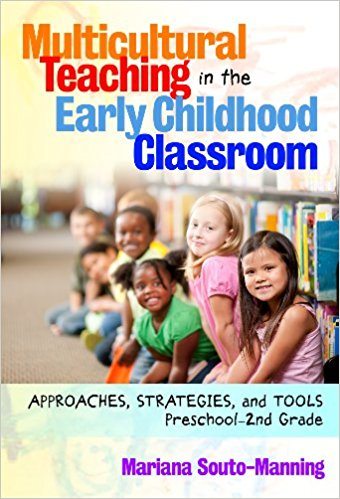
Multicultural Teaching in the Early Childhood Classroom is a guide for teachers who are faced with the many and varied learning styles of children from diverse cultural backgrounds. This book walks you through approaches and teaching tools even defining “multicultural education” and how to implement it. You will learn how to critically engage with the meaning of teacher and student culture, how to encourage active questioning and inquiry in young learners while taking into consideration every possible barrier. Mariano Souto-Manning discusses how to use storytelling and acting as an exchange of cultural experience and also includes methods for including technology in your early childhood classroom. This is must-have resource for 21st century early childhood educators.
28.)Using Observation in Early Childhood Education by Marian C. Marion

Author Marian C. Marion is a well-known author of textbooks for early childhood education. In Using Observation in Early Childhood Education Marion describes in detail the value of observation in the early childhood classroom. She argues that in order to assess and teach you much watch. Getting to know your early student is as much about observations is it is implementing a curriculum. You will learn how observation guides your decisions when determining programming, how observing child behavior in the environment informs those decision and how to connect with your students in a way that is relevant and meaningful. Naturally a major part of observation is assessing your learner- their cause and effect within the environment. In those moments, argues Marion, you can evaluate for your students strengths and weaknesses-identifying any issues and of course resolving them.
29.)NurtureShock: New Thinking About Children by Po Bronson and Ashely Merryman
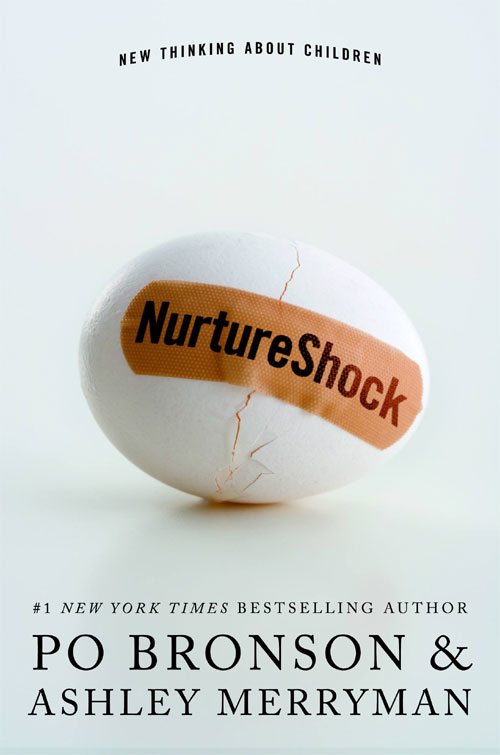
Brace for impact as Po Bronson and Ashley Merryman not only bust myths on early childhood but downright shatter a number of conceptions we have heard again and again. “Praise your child for being smart.” A ‘no-brainer” right? Not according to the findings of Carol Dweck and her team at Stanford. Those with a high self esteem are going to make it in this tough world. Except findings show that self-esteem has been measured in a way that is not useful and often times self-esteem is really full of oneself. “Highly aggressive violent people happen to think very highly of themselves.” These are the methods by which parents and educators nurture a culture of success to help students navigate their path to success. Bronson and Merryman say that much of this nurture is backfiring and causing a plethora of resistant teenagers and young adults to settle for whatever comes easy and natural. Additionally, this book touches on the importance of sleep, why children lie, issues with self-control, the effects of television-especially educationally-centered tv on aggressive behavior, and more. If you are ready for a challenge, pick up NurtureShock immediately.
30.)How Children Succeed: Grit, Curiosity, and the Hidden Power of Character by Paul Tough
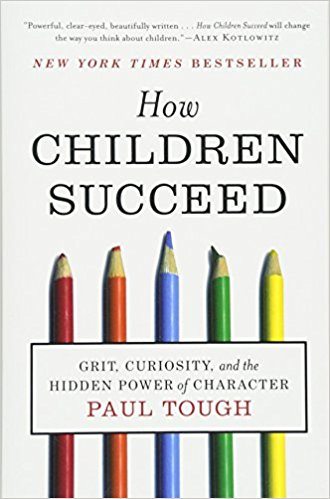
Through How Children Succeed Paul Tough outlines the importance of character on the success of children. Now backed in science, the importance of grit, and curiosity come to the fore as elements to seriously consider when educating young learners. Tough discusses how these elements improve the lives of children who grow up in any circumstance with particular attention to children growing up in poverty. This challenging read is a great choice for any educator or parent who is interested in changing the outcomes for children who may not be given as many opportunities. We highly recommend this book for all educators and believe that educators in urban settings will particularly benefit from the contents of its pages.
31.)Einstein Never Used Flashcards: How Our Children Really Learn- and Why They Need to Play More and Memorize Less by Kathy Hirsch-Pasek, Roberta Michnick Golinkoff, and Diane Eyer

Einstein Never Used Flashcards is a collection of activities that brings the reader be that a parent or a teacher back to common wisdom. What these three child psychologists do in the text is revive what we already know- children learn through play. Though after a number of years in high education, buried under books that force educators to practically teach to the test, it becomes unclear how to teach using play in the contemporary classroom. That’s another reason we love this book- the author’s take the guesswork out of teaching through play and provide you with 40 games to help you get your own creative juices flowing. Not only will you walk away with a treasure trove of fun for your students, you’ll also find yourself having fun piecing together and implementing these engaging, rewarding, activities that are developmentally appropriate for your learners.
32.)The Scientist in the Crib: What Early Learning Tells us About the Mind by Alison Gopnik, Andrew N. Meltzoff, & Patricia K. Kuhl

Based in the field of cognitive science, Alison Gopnik, Andrew N. Meltzoff, and Patricia K. Kuhl examine the minds of the babies. This illuminating book though published in 1999 is still relevant today. The Scientist in the Crib explains cognitive science- often described as the merging of linguistics, machine learning, neuroscience, and psychology- giving us unique insight into the world of infants. This book is filled with great analogies, humor, fun insights and is presented in a way that is perfect for the student completing a course, teacher in early childhood education, and new parent. You will learn how children develop language, interpret meaning, take in information through their eyes, and decode the sounds we would describe as “babble”. The presentation of the material is as good as the material utilizing star trek analogies, ancient wisdom and literature and so much more. If you have ever wondered what is happening in the mind of an infant, this book is a must-have.
33.)Power of Play: How Spontaneous, Imaginative Activities Lead to Happier, Healthier Children by David Elkind
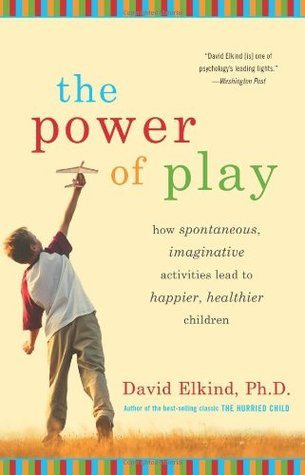
Child psychologist David Elkind begs the reader to actively question the absence of play in the daily lives of not just our children but of ourselves.
The Power of Play
examines the value of unstructured time alongside the value of structured, planned orderly events. I am recalling the days when I taught summer camp for the first time. There was a moment during the second or third day of camp that my co-teacher and I recognized as being “amazing.” The unstructured snack times, breaks, and lunch where the children had maximum freedom and minimal structure appeared to be where the real connecting took place. For myself and my co-teacher the piece we noticed first was the social interactions. We lead a camp for autistic children and to see that evolve without prompting or intervention was eye-opening. Elkind includes the role play has in becoming social. He also does not throw the baby out with the bathwater- examining how play can be used in school units like math, science, and reading. Additionally, Elkind examines play and development. Even if you don’t feel you have time for “spontaneity” in your day as an educator, we still think this would make a great resource of parents and teacher alike.
34.)Bringing Reggio Emilia Home: Innovative Approach to Early Childhood Education (Early Childhood Education Series) by Louise Boyd Cadwell
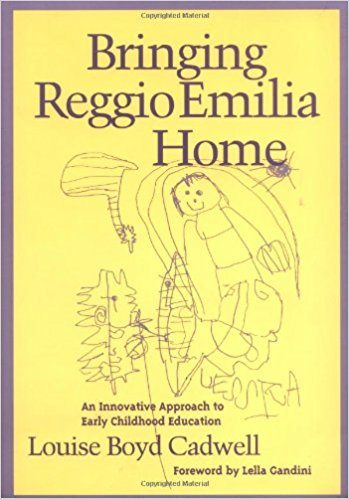
This book is a documentary account of a young intern who worked in the Reggio system in Italy and how she brought this pedagogy home to her school in St. Louis, Missouri. Louise Boyd Caldwell documented-with the help of her colleagues- her experiences in both Italy and the United States . Additionally Caldwell clearly outlines the Reggio Emilia approach through the following headings: “the child as a protagonist,” “the child as collaborator” “the child as communicator” “the environment as the third teacher” “the teacher as partner nurturer and guide” “The teacher as researcher” “documentation as communication” and the “parent as partner” For an in-depth and personal account of how Reggio Emilia emerged in St. Louis and for methodology for how you too may begin to adopt the practice, this is a great option.
35.)Brain Rules for Baby (Updated and Expanded): How to Raise a Smart and Happy Baby Child from Zero to Five by John Medina
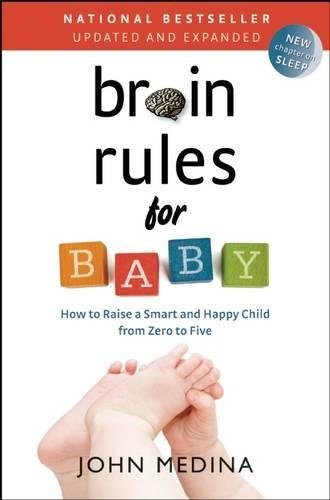
John Medina takes us on a journey inside the minds of a babies from birth to age five. Medina starts with the roles of parents and the developing mind of the baby. The audience of this book is the parents themselves. As is stated in his introduction, Medina has taken the cues from his parents in seminar and tailored this book to answer every parents’ burning questions. Though Media does touch on behavioral psychology, and cellular and molecular biology. His “brain rules” come from peer-reviewed worked that have been studied and replicated. Once they have met his scientific criteria for “best practice” into the rule book they go. We truly appreciate the marriage of science and common concerns from his audience. Some examples of his brain rules include: “babies remember” “teach self-control” “hurray for play!” and “talk to your baby- a lot!” This practical book will be one you reach for again and again throughout your babies early years. If you’re looking for a concrete yet individualized book to help you navigate and becomes fully aware of your baby’s development and your role in it, this is a must-have.
36.)Mind in the Making: The Seven Essential Life Skills Every Child Needs by Ellen Galinsky
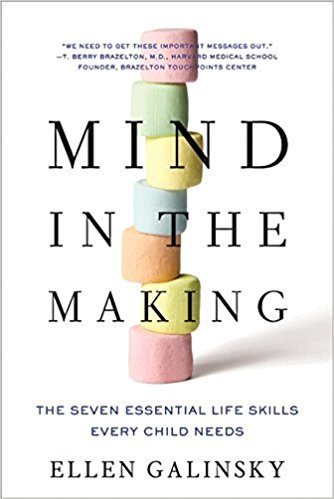
Author, educator, and founder Ellen Galinsky brings to us her fourth book on education- Mind in the Making. Based in the latest research on child development, Ellen Galinsky draws the reader’s attention to valuable advice for parenting, but it’s not about toilet training, breastfeeding, and school readiness. Her advice focuses on preparing the child to take on the challenges of the world and build a repertoire of what are considered to be “essential life skills.” Galinsky examines 7 critical areas: focus and self control, perspective taking, communicating, making connections, critical thinking, taking on challenges, and self-directed, engaged learning. All of the advice within the pages comes with concrete tasks; so parents are not left guess how to nurture each essential skill. This is a fantastic resource for parents who are ready for a fresh approach to parenting young children. Additionally, we like this resource for teachers as successful early childhood development programs work in tandem with educator and parent.
37.)Beyond Quality in Early Childhood Education and Care: Languages of evaluation (Routledge Education Classic Edition) by Gunilla Dahlberg, Peter Moss, and Alan Pence

How do you evaluate for quality in an early childhood program? Gunilla Dahlberg, Peter Moss, and Alan Pence have written the text book on ethics and how to truly make an attempt at understanding quality in early childhood education programs. The authors begin with theory in a cultural context as a foundation. Building upon that Dahlberg, Moss, and Pence show you how to construct learning in early childhood while examining the purpose of the institution. The pedagogy examined here includes Reggio Emilia and an examination of the Stockholm effect. In addition to this, the authors examine how to make a path for progress for students in the minority. This is a comprehensive examination of quality and ethics for early childhood learners and is must-have for educators working in the field of early childhood education and for practitioners focused on early childhood development.
38.)A Child’s Work: The Importance of Fantasy Play by Vivian Gussin Paley

Vivian Gussin Paley, on the shoulders of Rena Wilson, reminds us of how crucial play is to the development and learning of young children. Paley’s method of delivery is what makes this book so unique- she becomes a storyteller and each chapter is a new delightful tale of one child and how they play and of course learn. She paints a clear visualization that we as readers can observe and learn from. This is not your typical “guide book.” You won’t find the usual step-by-step instructions that are to be followed in order. You won’t find the jargon of a scientist. Rather, this book is written by a teacher who has made early childhood education her work for over 4 decades. If you are an educator, and you value play this is a good book. If you are an educator and you value play for you learners and for yourself- this book may become your best friend.
39.)Courageous Leadership in Early Childhood Education: Taking a Stand for Social Justice by Susi Long & Mariana Souto-Manning
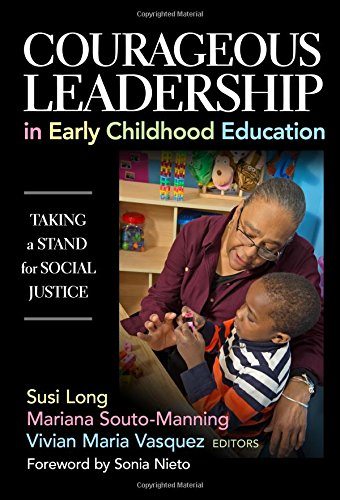
Actually, this book has 13 authors who take a courageous stand for social justice. This is collection of work from teachers to teachers that serves to encourage you to speak out and step out and be a voice for students in need in the early childhood years. Arguably, these are the most important years for children to learn how to be just in social scenarios. The authors of this book recognize this and have assembled a phenomenal group of essays to show you how to utilize these tools in your early childhood classroom. You will learn how to advocate for your young students, work with bilingual students, be “culturally relevant” leaders, collaborate with your students, involve family and the greater community, respond, understand risk-taking in rural elementary schools, setting up your classroom and more. We love this book for the wide-range of diversity expressed in its pages which perfectly echos the who purpose of this book- standing up for all types of learners regardless of race, culture, and societal context.
40.)Contemporary Perspectives on Early Childhood Education edited by Nicola Yelland

This is a collection of challenges to every educator working in the field of early childhood education. In the first part of the book the reader examines contemporary perspectives on global and policy issues including a rethink on pedagogy, a look at international development, the misuse of capital in poor developing countries, poverty and discourse in the United States and more. The second half of a book provides a much-needed practical component and weighs in heavily on your ability to empathize with a wide-variety of scenarios in practice. If you feel the intrinsic issues surrounding early childhood education and are ready to steer your education practice towards of a course that better aligns with contemporary issues, this is a tremendous resource.
